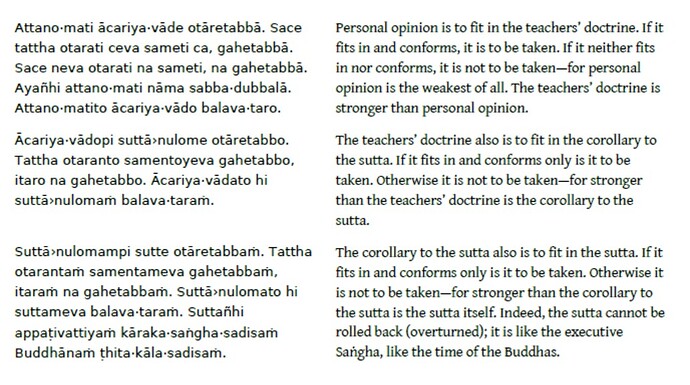Thank you, Bhante. I’ve added “grasp at the middle” to Voice examples. It’s quite an interesting example since the full phrase teaches “don’t grasp at the middle”, which is quite subtle and quite important. Buddhism is often taught as the…middle way. ![]()
Erm. Ahhh. ![]() …but…
…but…
The term “contact” can be understood as an atomic perception, literally a time-stamped, aggregatable mind moment. It is literally what I would program as a core concept in any recognition software. In physics, one might call it the collapse of the wave equation out of superposition into observation. Time-stamped contacts are aggregatable as a perceptual stream of time. And change itself is simply the perceived delta of time-stamped contacts.
For Voice I’m currently looking at the math of discrete time and it is pretty mind-blowingingly simple and elegant. The math of discrete time is the math of contacts, the math of mind moments. Speech is sampled as contacts (i.e. mind moments) which are transmitted and aggregated by the ear/mind into a perception of intelligible speech. And the fascinating thing about these contacts, these mind moments, is that the mathematics is true regardless of scale. We can sample time at 22050 Hz or at 1Hz. Both are equally valid. The stitching of contacts into the perception of time can span lightning strikes or eons.
A key concept about discrete time is the unit impulse. The unit impulse is basically a non-zero contact, a “mind moment”. And it is indeed a fraction of a flash of lightning. A contact occurs in the timespan of a single sample. With discrete time, what happens between contacts or mind moments is a meaningless question. There is nothing but the linear aggregation of contacts or mind moments. And that linear aggregation can happen at any scale, from eons to lightning storms.
Electronic systems are characterized by their “impulse response”, which in Buddhist terms is literally their response to a single contact or mind moment. The perception of a drum hit with a stick or of a tree struck by lightning are both examples of unit impulses, of contacts, of mind moments. The behavior of any system is its conditioned response to unit impulses (aka contacts or mind moments).
So perhaps there may be less difference between EBTs and Theravada here regarding contacts and time moments?
It’s not the woman’s body. It’s the “male gaze”. That is the only way I’ve been able to understand and tolerate some of the misogynous EBTs. And that male gaze is definitely a vile serpent of insidious grasping perception.
Bhante, thank you very much for putting together this list. I’ve been a bit confused about these issues for years. The EBTs have brought me peace and have provided a secure and coherent foundation for navigating the vast sea of Buddhist waves spreading out from that long ago earthquake of the Buddha’s awakening.
 Anyway, I’m dragging the thread in an off-topic direction with this. I’m not sure what prompted me to head off in this direction in the first place, particularly when it’s not as if there isn’t reams upon reams of threads on this site on the topic already. Anyway, I’ll stop now!!
Anyway, I’m dragging the thread in an off-topic direction with this. I’m not sure what prompted me to head off in this direction in the first place, particularly when it’s not as if there isn’t reams upon reams of threads on this site on the topic already. Anyway, I’ll stop now!!



